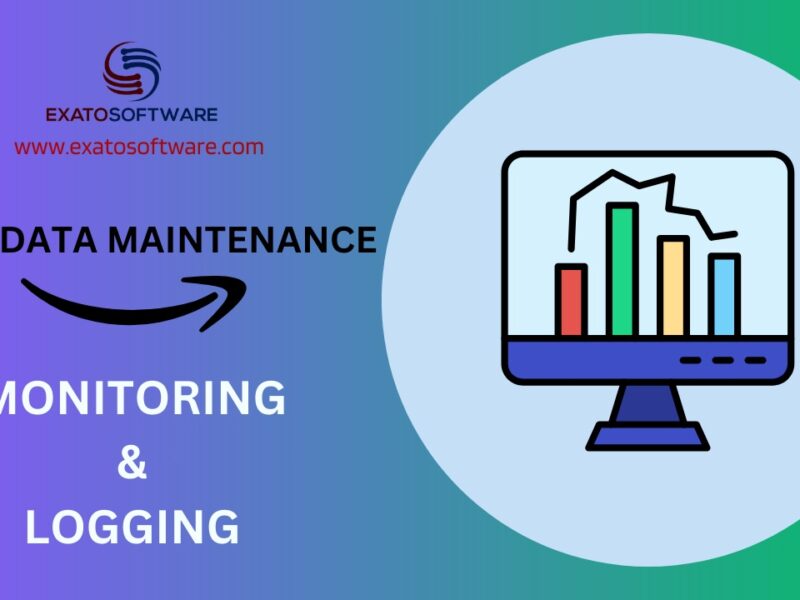The Elastic Stack, or ELK stack, is a collection of open-source software tools for log and data analytics. In many different IT environments, including cloud environments like AWS (Amazon Web Services), it is typically used for centralized logging, monitoring, and data analysis.
Three main parts to the ELK stack
1. Elasticsearch: Designed for horizontal scalability, Elasticsearch is a distributed, RESTful search and analytics engine. Data is stored and indexed, making it searchable and allowing for real-time analytics. In the ELK stack, Elasticsearch is frequently used as the primary data storage and search engine.
2. Logstash: This data processing pipeline uses logs, metrics, and other data formats to ingest, transform, and enrich data from a variety of sources. Before sending data to Elasticsearch for indexing and analysis, it can parse and structure it. In order to facilitate integration with various data sources and formats, Logstash also supports plugins.
3. Kibana: A user-friendly interface for querying and analyzing data stored in Elasticsearch is offered by the web-based visualization and exploration tool known as Kibana. For the purpose of displaying log data and other types of structured or unstructured data, users can create dashboards, charts, and graphs.
You can deploy these components on AWS infrastructure when using the ELK stack on AWS, taking advantage of AWS services like Amazon EC2 instances and Amazon Elasticsearch Service, and Amazon Managed Streaming for Apache Kafka
How the ELK stack can be installed on AWS
1. Elasticsearch: Using Amazon Elasticsearch Service, you can set up and manage Elasticsearch clusters on AWS, which streamlines the deployment and scaling of Elasticsearch. The provisioning, maintenance, and monitoring of clusters are handled by this service.
2. Logstash: AWS Fargate or Amazon EC2 containers can be used to deploy Logstash. You set up Logstash to gather data from various sources, parse it, and then transform it before sending it to Elasticsearch.
3. Kibana: Kibana connects to the Elasticsearch cluster and can be installed on an EC2 instance or used as a service. It offers the user interface for data exploration, analysis, and visualization.
By utilizing AWS infrastructure and services, you can guarantee scalability, reliability, and ease of management when deploying the ELK stack for log and data analytics in your AWS environment.
More about Elastic Search
Although Elasticsearch is not an AWS (Amazon Web Services) native service, it can be installed and managed on AWS infrastructure using AWS services. Full-text search and log data analysis are two common uses for the open-source.
Elasticsearch functions as follows, and using it with AWS is possible:
1. Data Ingestion: Elasticsearch ingests data from various sources in almost real-time. This information may be text, both structured and unstructured, numbers, and more. To stream data into Elasticsearch, use AWS services like Amazon Kinesis, Amazon CloudWatch Logs, or AWS Lambda.
2. Indexing: Elasticsearch uses indexes to organize data. A collection of documents that each represent a single data record makes up an index. Elasticsearch indexes and stores documents automatically, enabling search.
3. Search and Query: Elasticsearch offers robust query DSL (Domain Specific Language) search capabilities. On the indexed data, users can filtering, aggregations, and full-text searches. Inverted indices are used by the search engine to expedite searches, making it possible to retrieve pertinent documents quickly and effectively.
4. Distributed Architecture: Elasticsearch is made to be highly available and scalable. It can manage huge datasets and distribute data across many nodes. AWS provides services like Amazon EC2, Amazon Elasticsearch Service, and Amazon OpenSearch Service, that can be used to deploy Elasticsearch clusters.
5. Replication and Sharding: To ensure data redundancy and distribution, Elasticsearch employs replication and sharding. Each of the smaller units of data, or “shards,” may contain more than one replica. This guarantees parallel search operations as well as fault tolerance.
6. Text analysis and tokenization are carried out by Elasticsearch during indexing. For easier searching and filtering of text-based data, it uses analyzers and tokenizers to break down text into individual terms.
7. RESTful API: Developers can communicate with Elasticsearch through HTTP requests thanks to its RESTful API. As a result, integrating Elasticsearch with different programs and services is made simple.
8. Visualization: Kibana, a tool for data exploration and visualization, is frequently used in conjunction with Elasticsearch. Users can build dashboards, charts, and graphs using Elasticsearch data with Kibana, which offers insights into the indexed data.
Although Elasticsearch is not an AWS service, you can use AWS infrastructure to deploy it using services like Amazon EC2, manage it yourself, or use Amazon OpenSearch Service, which is a managed alternative to Elasticsearch offered by AWS.
Elasticsearch is an effective indexing, searching, and analytics tool for data. In order to take advantage of Elasticsearch’s scalability, dependability, and usability, AWS offers a variety of services and resources that can be used to deploy and manage clusters on its infrastructure.
Elastic Search and Kibana
In order to create scalable and potent analytics solutions, Elasticsearch and Kibana, two components frequently used in conjunction for log and data analysis, can be deployed on AWS (Amazon Web Services).
Kibana
An open-source tool for data exploration and visualization called Kibana integrates perfectly with Elasticsearch. It offers users a web-based interface through which they can interact with and view Elasticsearch data. You can build custom dashboards with Kibana, create visualizations (such as charts, maps, and graphs), and explore your data to discover new information. Elasticsearch and Kibana are frequently combined to produce powerful data-driven dashboards and reports.
What you can do by using Kibana and Elastic Search
1. Amazon Elasticsearch Service: This is an AWS managed Elasticsearch service. Elasticsearch cluster deployment, scaling, and management are made easier. Using this service, you can easily set up and configure Elasticsearch domains.
2. EC2 on Amazon: If you need more control and environment customization, you can also decide to deploy Elasticsearch and Kibana on Amazon Elastic Compute Cloud (EC2) instances.
3. Amazon VPC: To isolate your Elasticsearch and Kibana deployments for security and network segmentation, use Virtual Private Cloud (VPC).
4. Amazon S3: Elasticsearch can be used to index and search data that is stored in Amazon S3. Your Elasticsearch cluster can use S3 as a data source.
5. IAM (AWS Identity and Access Management): Only authorized users and services are able to interact with your Elasticsearch and Kibana resources thanks to IAM management of access control.
6. Amazon CloudWatch: Your Elasticsearch and Kibana clusters’ performance can be tracked using CloudWatch, and alarms can be set up for a number of metrics.
Elasticsearch and Kibana on AWS offer a robust platform for log and data analysis, simplifying the management and scaling of your analytics infrastructure while utilizing AWS’s cloud services.
Logstash
With the help of the open-source data ingestion tool Logstash, you can gather data from various sources, modify it, and send it where you want it to go. Regardless of the data source or type, users can easily ingest data using Logstash thanks to its prebuilt filters and support for more than 200 plugins.
An easy-to-use, open-source server-side data processing pipeline called Logstash enables you to gather data from various sources, transform it as you go, and send it where you want it to go. Most frequently, Elasticsearch uses it as a data pipeline. Logstash is a well-liked option due to its tight integration with Elasticsearch, potent log processing capabilities, and more than 200 prebuilt open-source plugins that can help you easily index your data.
Kibana or Logstash
Explore & Visualize Your Data with Kibana.
For Elasticsearch, Kibana is an open source (Apache Licensed), browser-based analytics and search dashboard. Kibana is simple to set up and use. Collect, Parse, & Enrich Data are flexible and easy to use in Kibana.
A tool for managing events and logs is called Logstash. It allows you to gather logs, analyze them, and store them for later use (such as searching). You can view and examine them with Kibana if you store them in Elasticsearch.
Kibana offers a variety of features, including: A flexible analytics and visualization platform; real-time summarization and charting of streaming data; and an intuitive user interface.
However, Logstash offers the following salient characteristics:
• Consolidate all data processing operations
• Adapting different schema and formats.
• Easily adds support for custom log formats.



